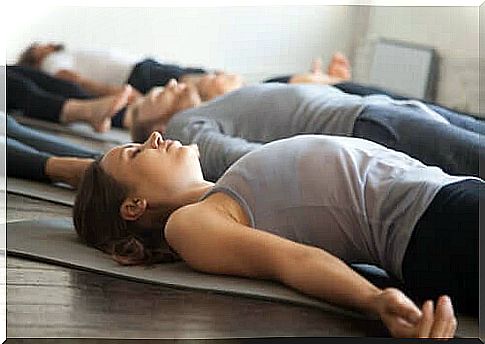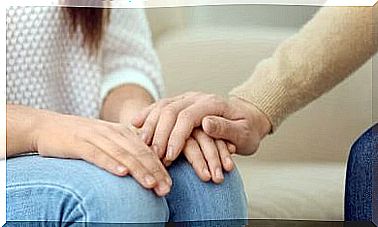Relaxation Exercises: 10 Difficulties To Overcome

Breathing and relaxation exercises are considered to be great allies in anxiety disorders, depression or obsessive-compulsive disorder. Not only that, but they are also useful in the daily life of many people who use these tools on a daily basis. Their benefits are immense, but the difficulties of relaxation exercises, the obstacles that hinder their performance, also exist.
It is precisely because of them that many people fail to achieve their goal of reducing psychophysiological activation. Here are some of the problems that can arise when achieving progressive Jacobson muscle relaxation. Or autogenic training from Shultz.
What is progressive muscle relaxation?
Progressive muscle relaxation is a technique developed by Jacobson whose history can be found in Eastern philosophies, meditation and yoga.
Its main objective is the reduction of activation which allows general relaxation. The organism being a whole, this technique deduces from it that through the relaxation of the various muscles, the organism sends signals to our brain asking it to carry out a general relaxation.

Main objective: deactivation of the sympathetic system
The nervous system has two branches: the sympathetic branch and the parasympathetic branch. The sympathetic branch is related to activation, while the parasympathetic branch is related to relaxation. These two branches cannot activate at the same time, because one cannot be tense and relaxed at the same time.
The interest of progressive muscle relaxation is therefore to deactivate the sympathetic branch to activate the parasympathetic. The most important effects of relaxation are decreased muscle tone and slower breathing.
Relaxation training
For progressive muscle relaxation to work, frequent training is necessary (automation is the goal). Training consists of exercises where muscles tighten and relax one by one, for several seconds, following a chain of muscle groups. First the arms relax, then the face, neck, stomach or legs.
The ultimate goal is that in order to relax, the person does not need to perform tension-distension exercises. His muscles should relax on their own when they feel tension due to nervousness or anxiety. This goal can only be achieved through training.
In this training, however, problems may arise that make it difficult to acquire the learning. The person may come to think that the exercises are worthless. In the worst case, she can just stop training. Often, both in session and day to day, it is convenient for the person to be able to relax in order to accomplish their daily tasks and achieve their goals. Here are the main difficulties that this objective can cause.
It is important to keep them in mind to correct them, but also not to be overcome by the challenge. There are reactions of the body which, although they seem strange, are quite normal when subjected to these exercises.
Intromissions during practice
In the rest of this article, we will talk about some difficulties that arise in our own practice:
- Difficulty concentrating on the exercises : The relaxation situation can be strange. It is not uncommon for it to be difficult at first, given the low level of stimulation, to remain calm. We recommend that you do not give up, little by little the “artificial” will become “natural”
- Movements : Movements on a chair or bed are usually quite typical. If for all that the person takes the opportunity to rest or do something else, they no longer allow the desired result to be achieved. On the other hand, when these movements continue to take place, it means that the person is not relaxed.
- Constant and disturbing thoughts : although it would be ideal to practice cognitive control before relaxation, often the order is not respected. In order to avoid these thoughts, we can condition calm sounds for relaxation that allow us to fill our head. It is also helpful, in group training or therapy, for it to be the therapist’s voice that keeps the focus on the task. Mindfulness exercises are also very helpful in avoiding disruptive thoughts.
Feeling ashamed during training
Below we talk about some difficulties, which take the form of subjective sensations, which practice can generate:
- Fear of closing their eyes : Some people do not want to close their eyes during relaxation. This happens especially when they are coached or when the training is done in a group. It also occurs in homes where it is difficult to be alone for a while. It has to do with the fear of losing control. Normally, we are not used by the process of socialization to stay awake in strange situations. Understand that closing your eyes is important in order not to be distracted by the outside world. Scheduling a few hours of the day when we cannot be disturbed can free us from the fear of not having control over who can enter.
- Retraction in performing certain exercises : If the training is not done at home or in therapy, the person will probably feel ashamed when performing certain tension-distension exercises. The therapist can remedy this if he performs the exercises with the patient without any hesitation. For this reason, we recommend that you perform the exercises at the beginning without sneaking glances if you feel ashamed or shy.
- Laughs or Discussions : Due to the discomfort many people feel when encountering silence, laughter or discussion aloud may be heard whether the training is in a group or in session. We recommend that you contain laughter and speech because they can break the dynamics of relaxation itself. Because of them, everything that has been done so far will have been for naught. If this happens during the session, it is recommended that the therapist stop these behaviors. If that doesn’t work, those with comments should speak out subjectively and without exaggeration.
- Dizziness : Dizziness sometimes occurs when training is done while lying down. You can solve the problem by changing your posture and staying straighter
- Spasms and tics : These usually occur when there is high tension early on. This is a good sign, because it means that relaxation is working
- Muscle cramps : cramps can occur especially in the calves and feet. If these areas become problematic, we recommend that you reduce the tension seconds and lengthen the relaxation seconds. We also recommend that you do not associate relaxation with the sensation of these cramps. If the feeling becomes very unpleasant, it may be helpful to walk for a few minutes before practicing again. However, it is often counterproductive to stop and not start over.
- Internal activation (arousal) : There are certain muscles that the human will cannot control. Muscle relaxation only affects what is under our control. However, it is important to keep in mind that these systems are interconnected and that with the practice of relaxation there will also be internal distension. It is therefore normal to first notice that you feel an internal tension even if the muscles are relaxed.

Normalization of strange sensations
In many cases, these difficulties will tarnish the training of the day. They can even frighten those who feel the unwanted consequences of the relaxation session. There is nothing wrong with not being able to overcome a difficulty at some point if you keep working on it.
Finally, when it comes to weird sensations, always keep in mind that they are normal. Gradually, as the body gets used to the relaxation exercises, they will disappear. It shouldn’t be a cause for discouragement or an inspiration for thoughts that indicate we’re doing things wrong.
At no time, no matter how complicated, should you not give up and end the training. We recommend that you continue until you gain control of your muscles and are able to relax – almost – to your liking.









